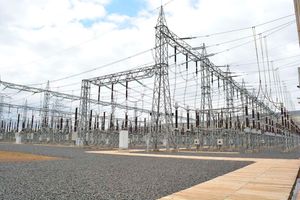Premium
Digital shift tests KRA’s tax collection limits

A shift by the Kenya Revenue Authority to digital tax systems is deepening amid pressure to seal loopholes and onboard more taxpayers to enable it hit a dream target of Sh4.8 trillion in revenues by June 2027
From customs management to value-added tax (VAT) administration and now a planned real-time tracking of the sales of excisable goods, a shift by the Kenya Revenue Authority (KRA) to digital tax systems is deepening amid pressure to seal loopholes and onboard more taxpayers to enable it hit a dream target of Sh4.8 trillion in revenues by June 2027.
Against the backdrop of economic shocks due to the Covid-19 pandemic and the Russia-Ukraine war, the government is highly pressured to enhance tax compliance and step-up revenue collection to finance public goods and services.
The KRA is now making a big bet on a digital shift and automation of its revenue systems to boost compliance and collections.
Last week, the taxman announced the sale of goods and services covered under the excise tax law including beer, juice, mobile airtime, cigarettes, and petroleum are set to be monitored real-time, adding a fresh layer of revenue streams to be administered on a technology-backed platform.
The KRA targets to collect Sh297.2 billion in revenues from excise duty by June and expect to increase collection to Sh521.5 billion in 2027.
KRA deputy commissioner of domestic taxes George Obel said excisable goods would be added to the agency’s Tax Invoice Management System (eTIMS), which will give the authority access to full trading information by businesses in real-time- filling the gap many businesses have used to pay fewer taxes.
This would add to VAT registered taxpayers and cargo clearance which have been loaded onto eTIMs and the recently new Integrated Customs Management System (iCMS), respectively.
The taxman has been piloting eTIMS with some 298 VAT-registered taxpayers which have seen 908 invoices issued for sales amounting to Sh206.25 million and plans a full rollout in May.
“Once we have successfully on-boarded the VAT-registered businesses on eTIMS, the next step will be rolling out the same to suppliers of excisable goods and services to bring more efficiency in the collection of excise duty,” said Mr Obel.
The KRA hopes that eTIMS will help businesses to reduce compliance costs primarily by reducing the cost of purchasing multiple tax invoicing hardware such as the electronic tax register (ETR) machines.
It is also betting on real-time invoice transmissions on the eTIMS to improve the accuracy of invoice declarations and reconciliations between filed returns and payments.
“Due to the progressive implementation of the EBM (electronic billing machine) in Rwanda, there has been a significant growth in VAT collection, which currently represents the largest share of tax revenue,” said KRA.
“It is for this reason that KRA has embarked on adopting this solution with the aim of reducing the VAT gap and starting off on the journey towards the pre-filled return,” it said.
The new system will replace the tax invoice management system (TIMS) in use and has onboarded some 67,954 taxpayers out of 113,239 active VAT-registered taxpayers.
The KRA is keen on successfully implementing the eTIMS for VAT collections to deal with leaks. According to the Treasury, VAT is the tax head worst affected by revenue losses with an average of Sh292 billion in potential collections not being realised annually.
“We are installing a new tax system because at the moment, we have been collecting 60 percent of collectible VAT. Almost 40 percent is not being collected because of pilferage here and there. The system we are now installing is going to drive the collection of VAT to between 90 and 97 percent”, President William Ruto said in a recent televised interview.
The rollout of eTIMS comes barely two years after the KRA ceased clearing cargo on its old manual Simba system, except petroleum products and completely knocked down (CKD) motorcycle kits.
“ICMS eliminates redundant processes, re-engineers customs processes, automates manual processes, and thereby reduces the time and cost of doing business. In this regard, DPC will no longer process any entries lodged on Simba other than petroleum products, ex-warehouse, and CKD motorcycles entries as from May 6, 2022,” KRA said at the time.
The shift to iCMS since October 2021 has eased customs management after alignment with those used by other East African Community (EAC) governments.
The taxman had for a long time cleared import cargo using separate electronic platforms, mainly the upgrades on its Simba customs management systems introduced in 2005.
The separate systems included direct assessment, valuation system, customs oil stock information, cargo management, electronic cargo tracking, customs ledger management module, air passenger service charge, and real-time monitoring.
The iCMS involves submitting export or import documents to a single-window and is expected to reduce clearing time by at least 60 percent and provide an efficient interface with the customs management systems of the EAC neighbours. In the iCMS, traders are required to submit sea manifests for both imports and exports 48 hours before a vessel arrives or departs.
In a bid to seal revenue leaks and dumping of cargo, EAC partners in 2014 adopted a single customs territory system (SCT) that allows joint collection of customs taxes.
Under the SCT deal, clearing agents within the EAC have been granted rights to relocate and operate across partner States as part of a scheme to improve the flow of goods and curb dumping.
Importers covered under the SCT are required to lodge import declaration forms in their home country and pay relevant taxes to facilitate the export process.
The tax authorities in the respective countries then issue a road manifest against the import documents submitted electronically by the revenue authority of the importing country.
The EAC partners have also adopted electronic tracking of cargo to facilitate seamless monitoring of goods on the various transport corridors to beat tax cheats.
Kenya, Uganda, and Rwanda have a common cargo tracking that comprises satellites, a central monitoring centre, and special electronic seals fitted on cargo containers and trucks. It gives goods location real-time.
The system activates an alarm in case of a diversion from designated route, a long stopover, or attempt to open a container.
Besides curbing theft of cargo, the system seals loopholes that cause revenue losses through under-declaration of cargo.
Tanzania and Burundi are not part of the EAC cargo tracking line.





